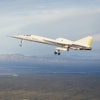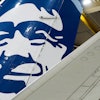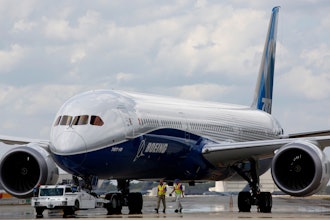The biggest growth in the aerospace sector will come from China in years to come, with China set to become the number one market, according to the bosses at Airbus.
One hundred years after the first plane for paying passengers took to the skies, the manufacturer has been forecasting the future direction of the industry.
Today, 32 million flights carry three billion passengers and 50 million tonnes of freight a year. Globally the aviation sector's economic impact is estimated at £1.5 trillion annually.
Airbus' global market forecast predicts the growth will continue at a healthy rate.
The firm predicts passenger traffic will grow annually at 4.7 per cent driving a need for around 31,400 new passenger and freighter aircraft (100 seats and above).
The passenger and freighter fleet will increase from today's 18,500 aircraft to 37,500 by 2033, an increase of nearly 19,000 aircraft. Some 12,400 older less fuel efficient passenger and freighter aircraft will be retired.
That should be good for Bristol's world-leading aerospace cluster, although the fastest growth will come from emerging markets such as Asia, Latin America, Africa and the Middle East. Already carriers such as Ethiad and Qatar are among the biggest customers for the soon-to-be-ready A350 XWB.
Airbus chief operating officer John Leahy said: "Aviation is growing impressively and our latest forecast confirms its long term growth."While mature aviation regions such as Europe and North America will continue to grow, Asia will stand out along with emerging markets for dynamic development. This growth trend is confirmed by Chinese domestic traffic becoming the world's number one aviation market within the next 10 years."
The Filton plant employs 4,000 people who design the wings and test the landing gear across the Airbus fleet, as well as assembling the wings for the A400M military transport plane. But there are thousands more jobs linked to the firm's presence.
Components specialist GKN, for example, manufactures wing parts from composite materials for the A350 XWB from its specialist Severn Beach facility.
The wide body market is where Airbus believes it will see most growth.
John said: "We see especially strong growth in wide-body twins such as our A350 XWB and A330neo. Demand exceeds supply for these new generation aircraft, especially in the 2017 to 2022 time period and beyond, so naturally we are studying production increases on both models."
The first A350 XWB will be delivered later this year while the first A330neo in 2017.
It predicts wide-body demand will include 7,800 twin aisle aircraft with between 250 and 400 seats and some 1,500 very large aircraft with over 400 seats for operation on the busiest routes.
Reflecting a higher than average growth and concentration of populations around cities, almost half of the new passenger wide body planes will be delivered to carriers based in the Asia-Pacific region, then the Middle East (16 per cent), Europe (15 per cent) and North America (nine per cent).






















